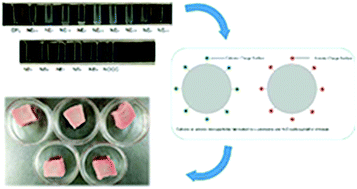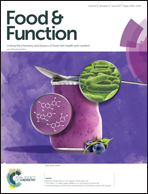Physicochemical and antimicrobial properties of ε-polylysine/carboxymethyl chitosan polyelectrolyte complexes and their effect against spoilage microorganisms in raw pork
Abstract
This study investigated the properties of polyelectrolyte complexes (PECs) fabricated by using ε-polylysine (EPL) and N,O-carboxymethyl chitosan (NOCC) and their potential applications in raw pork. The phase behaviors of PECs in aqueous solutions are characterized by the ζ-potential, mean radius and turbidimetric measurements. Stable colloidal and soluble PEC systems can be fabricated by carefully adjusting the mass ratio of NOCC to EPL. The minimum inhibitory concentration (MIC) assay showed that the colloidal and soluble PECs could maintain the antimicrobial activity of EPL in a laboratory medium. The antimicrobial effectiveness of coatings incorporating three PECs against spoilage microorganisms of raw pork under refrigerated conditions (4 °C) was evaluated. Microbial analysis demonstrated that the bacterial counts were significantly (P < 0.05) lower in sprayed samples with tested PECs containing 0.1% (v/v) EPL, especially for PECs with the mass ratio (NOCC/EPL) at 3 than that of the control sample throughout the storage period, while there were not significantly different counts (P > 0.05) among all samples in the case of molds and yeasts.



 Please wait while we load your content...
Please wait while we load your content...